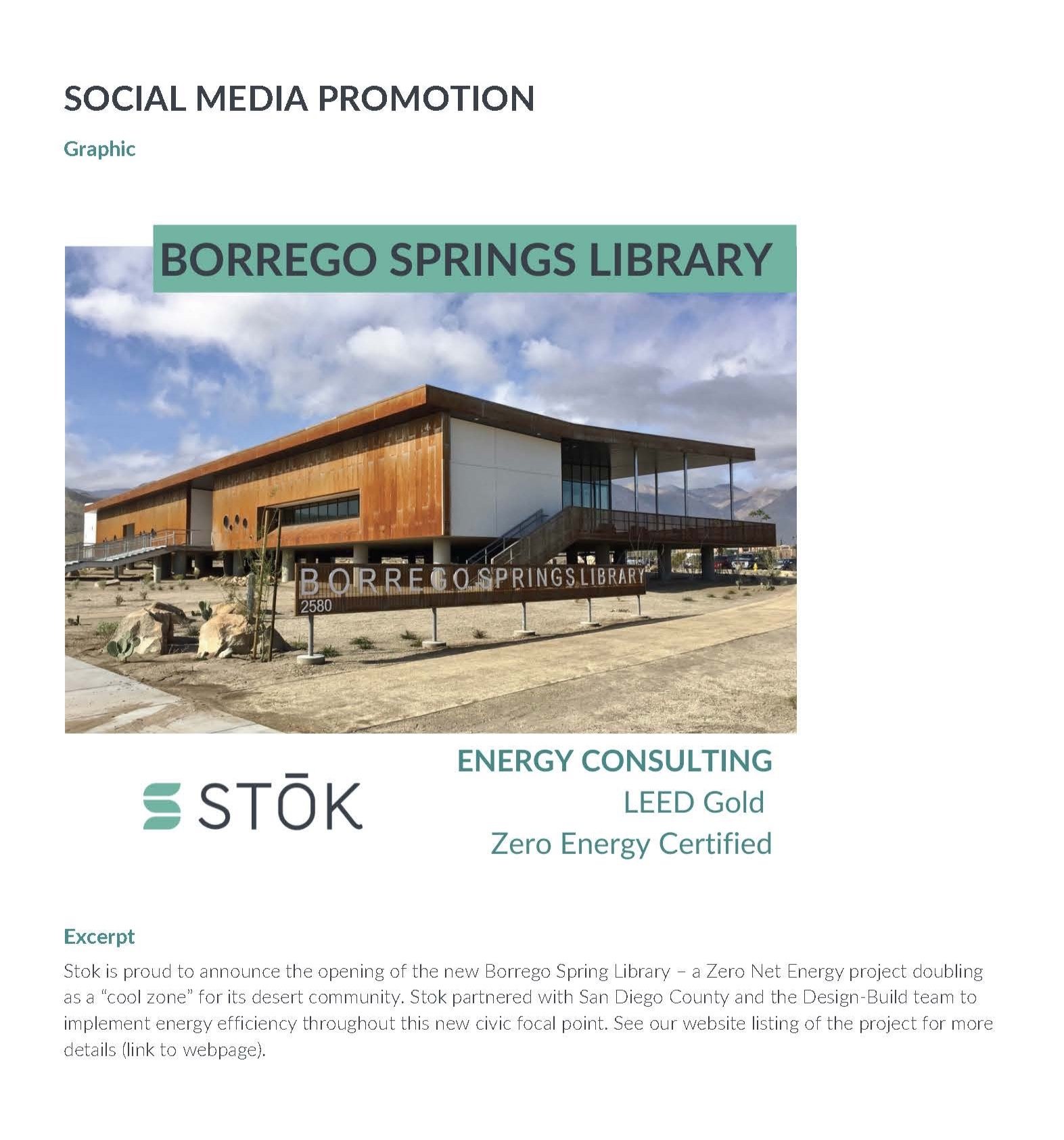PROJECT PROFILE
Excerpt
Stok engineered Zero Net Energy (ZNE) feasibility and integration for the new Borrego Springs Library, the first in a constellation of planned civic structures serving a desert community. The building is a sensitive addition in the severe and delicate ecosystem, adding space for public engagement and climate change preparedness.
The Challenge
The sustainably focused County of San Diego sought to create a civic centerpiece and cool zone for the inland town. Stok had to determine strategy to integrate ZNE performance, and to optimize the library as a cool zone for local residents, planning for increasingly frequent heat waves and unpredicted use loads
• Engage in the early, pre-RFP stages of the project to advise on ZNE feasibility while integrating extensive stakeholder input gathered by the county.
• Advocate for the county’s ZNE goal with the Design-Build team, accounting for end-use beyond standard code-compliant engineering.
• Harmonize the project with the design team for continued performance of the library and integration of the predicted master plan construction.
The Solution
What are 2-3 key outcomes of the project that Stok played a role in? What functional leadership groups did we achieve them with/for? What was critical for success? Organize these under focused headers with brief paragraphs detailing strategies, features, and collaboration that led to each result.
Solution #1 Durable Integration into a Delicate Ecosystem
Stok’s onsite modeling exercises determined Zero Net Energy plausibility early in the facility conception. Stok continued to track the project, providing peer review from Schematic Design through Construction Documentation, working directly with the Design-Build team to harmonize the project with the desert landscape, dark sky preservation, intense heat, and occasional flooding that characterize the area.
Solution #2 A Respite for a Desert Community
Stok facilitated design development to establish the library as a designated cool zone for residents during harsh desert heat waves. Modeling predictive energy for this function was difficult since the facility must accommodate use outside of normal business hours. Stok resolved this uncertainty through intense coordination and predictive estimating. The result is a safe and durable oasis that adjusts to use beyond a standard code-compliant facility and anticipates an increase in climate change-related events.
Solution #3 Continued Sustainability in a Growing Public Center
Stok provided Metering and Verification services through an integrated submetering strategy that continually measures building consumption, and is automated to track energy performance for the library’s end-users. The building’s success heralds the design and engineering approach to the rest of the projected campus.
By The Numbers
List 3 key figures that emphasize the project impact/performance
· 1 onsite energy model that determined building envelope, façade treatment, shading, and curtain wall for the final design
· 103.95 kW of renewable energy capability with an onsite PV inverter
· 6 Awards including LEED Gold Certification
